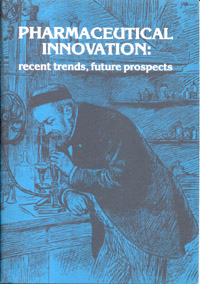Sign up to our newsletter Subscribe
Challenges and Solutions for Budget Impact Analysis of Gene Therapies

Therapeutic progress in recent decades has made a major contribution to reductions in mortality and has extended control to the symptoms of many chronic diseases. Thus developments in chemotherapy and immunisation have combined with economic, social and environmental improvement to bring about the…
Therapeutic progress in recent decades has made a major contribution to reductions in mortality and has extended control to the symptoms of many chronic diseases. Thus developments in chemotherapy and immunisation have combined with economic, social and environmental improvement to bring about the restructuring of mortality profiles illustrated in Figure 1. The principal change has been of course the dramatic reduction in the number of deaths attributable to infectious disease: between 1951 and 1981 the crude death rate per million population for infective and parasitic diseases fell from 408 to 42, generating a current annual saving of more than 18,000 lives.
Within this broad disease grouping the most dramatic improvement has been shown by respiratory tuberculosis. Here the mortality rate has declined by 97 per cent over the same period so that in 1981 there were just 433 deaths from this cause compared with the 13,650 that might have been expected in the absence of any change in the death rate. The impact of anti-infective chemotherapy and effective vaccines has not, however, been restricted to tuberculosis alone: notifications data (Table 1) and mortality statistics
(Table 2) indicate that there have also been major reductions in the incidence of and mortality from, for example, diphtheria, acute poliomyelitis, syphilis and whooping cough. One of the consequences of these and other improvements has been a halving of the child mortality rate over the 30 year period to 1981 (when it stood at 31 per 100,000 aged 1—14 years) and thereby the addition of a further three years to average life expectancies at one year of age (Figure 2).
The benefits of chemotherapeutic progress have also been directly manifest in diseases other than those resulting from infectious causes. The development, for example, of prophylactic therapy for asthma as well as the selective beta agonist drugs which rapidly effect control of attacks of breathlessness have greatly improved the quality of life and provided psychological assurance for many asthmatics. Similarly, the evolution of nonsteroidal, anti-inflammatory drugs has generated considerable gains for many of the hundreds of thousands of individuals suffering from diseases of the joints and organs of movement by promoting greater mobility and pain control. In both these instances, however, the patient benefits principally assume the form of enhanced well-being and social functioning and as such are not as readily measurable as those associated with advances leading to reductions in mortality or hospital admissions. Indeed, the last 20 years have witnessed a period of ‘therapeutic transition’ in which new medicines have increasingly fallen into this category, that is they have had a greater impact on the quality of life than on beta blockers for angina and hypertension, the anxiolytics and antidepressants for psychiatric morbidity, preparations for common skin complaints and chemotherapy for gout.
Concomitantly, pharmacological advance has played what might be viewed as a more indirect role in facilitating therapeutic progress. Thus the development and refinement of effective local and general anaesthetic agents, muscle relaxants and antibiotics have facilitated a radical extension of the scope for surgical intervention, greatly enhanced the safety of such procedures and played a part in promoting economical short stay surgery. In addition have been reduced by the availability of agents inhibiting extra corporeal blood platelet aggregation and the development of immunosuppressant drugs has laid the foundations for a new era in which transplantation has become a feasible approach to diseased or malfunctioning organs.
The health, social and economic benefits (Table 3) attributable to the widening scope for therapeutic intervention coupled with the significant levels of inadequately treated morbidity still remaining in the community have provided a powerful incentive to continued investigation of the causes of, and potential solutions to, disease. As a consequence research expenditures have maintained a steady pattern of increase over time. Spending by the Medical Research Council, for example, has risen from £25 million in 1971/72 to over £106 million in 1981/82 (Figure 3). Financial support for medical research forthcoming from the nation’s medical charities was valued at more than £70 million in 1982 having risen from approximately £25 million in 1976 when aggregated data for this sector first became available. Expenditure growth has been most marked, however, in the research and development undertaken by the pharmaceutical industry: spending increased from £29 million in 1970 to £419 million in ig82. Even after the effects of inflation have been taken into account this increase still represented a more than threefold growth in real terms.
Yet sustained growth in research and development expenditures to the current level of almost £600 million per annum has not been accompanied by any corresponding acceleration in the number of new medicines becoming available for patient use. Indeed, the opposite has been the case: new market entries – including reformulations, new combinations, additional modes of presentation and new chemical entities — numbered approximately 300 per annum at the beginning of the 1960s, but had declined to less than 100 by the end of the following decade. Focusing on new chemical entities (NCES), the most innovative of these introductions, a similar pattern has emerged: a review by Steward and Wibberley (1980) indicates that over the same period of time marketing rates have halved to the present level of around 20 NCES per annum (Figure 4). This paper therefore sets as one of its central objectives the exploration of these seemingly paradoxical trends. From this analysis it is hoped to identify the essential preconditions that must be fulfilled if the potential for therapeutic advance outlined in another section of the paper is to be fully realised in the coming decades
Pharmaceutical Innovation: Recent Trends, Future Prospects

